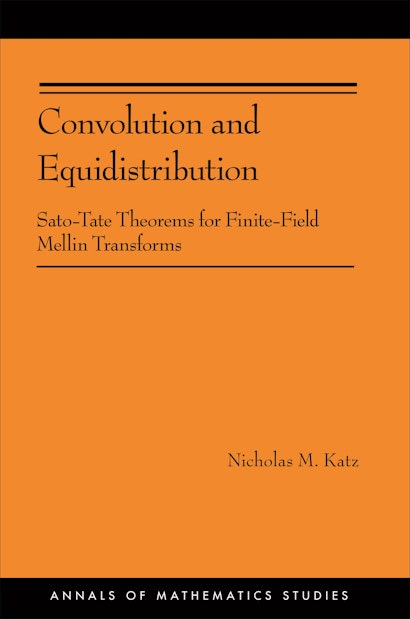Convolution and Equidistribution explores an important aspect of number theory—the theory of exponential sums over finite fields and their Mellin transforms—from a new, categorical point of view. The book presents fundamentally important results and a plethora of examples, opening up new directions in the subject.
The finite-field Mellin transform (of a function on the multiplicative group of a finite field) is defined by summing that function against variable multiplicative characters. The basic question considered in the book is how the values of the Mellin transform are distributed (in a probabilistic sense), in cases where the input function is suitably algebro-geometric. This question is answered by the book’s main theorem, using a mixture of geometric, categorical, and group-theoretic methods.
By providing a new framework for studying Mellin transforms over finite fields, this book opens up a new way for researchers to further explore the subject.
Nicholas M. Katz is professor of mathematics at Princeton University. He is the author or coauthor of six previous titles in the Annals of Mathematics Studies: Arithmetic Moduli of Elliptic Curves (with Barry Mazur); Gauss Sums, Kloosterman Sums, and Monodromy Groups; Exponential Sums and Differential Equations; Rigid Local Systems; Twisted L-Functions and Monodromy; and Moments, Monodromy, and Perversity.
"The book is written in a clear and enlightening style. The author provides the reader with many examples that are developed throughout a dozen chapters. These examples help understand and clarify the depth and the variety of applications of the beautiful main equidistribution statement that relies on rather complicated and subtle algebrageometric arguments."—Florent Jouve, Mathematical Reviews Clippings
"The book provides the reader with much material around the question of the equidistribution of the angles if one fixes f and varies over the multiplicative character x. More than one hundred pages of examples provide the reader with great insight in the different applications of the main theorem. This turns the book into a very good basis for research in this area."—Manfred G. Madritsch, Zentralblatt MATH
"Once a certain basic understanding is reached, this book, like the others written by N. Katz, reveals itself to be very precisely and sharply written, and to be full of riches. And finally, this theory shows spectacularly how some of the most abstract ideas of algebra and algebraic geometry may be essential to solving extremely concrete problems."—Emmanuel Kowalski, Bulletin of the American Mathematical Society

